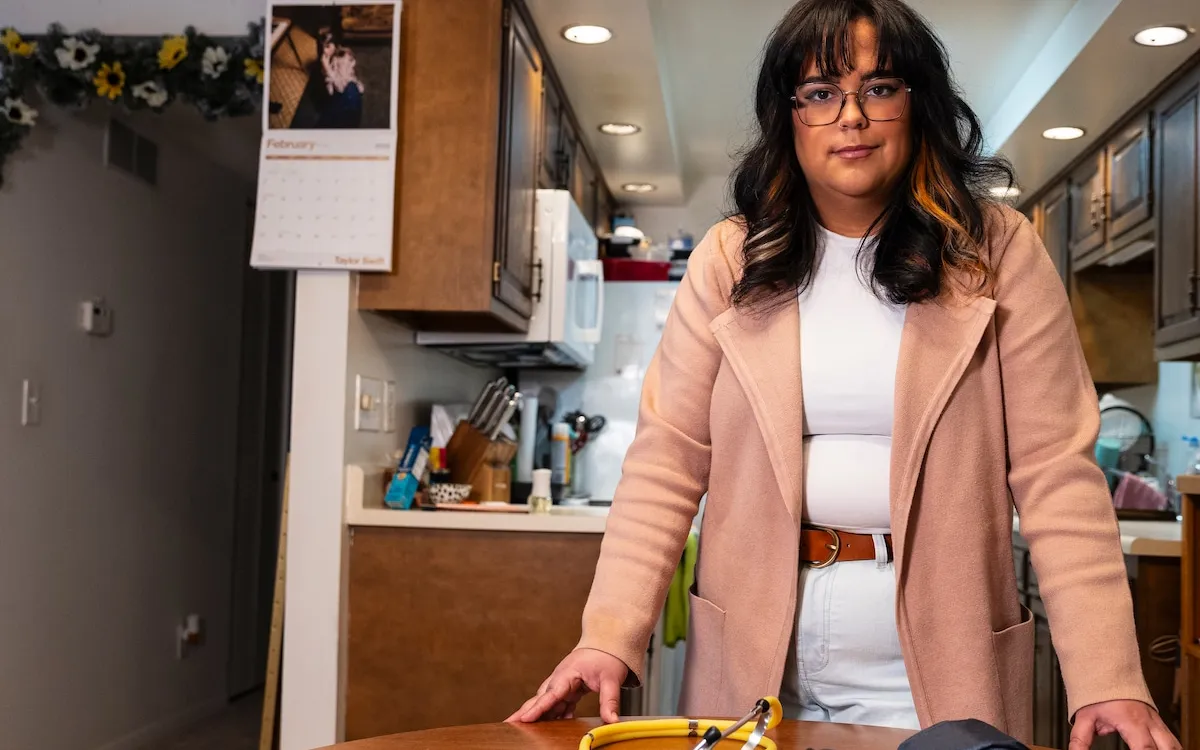
Kaileigh Baia, a 27-year-old resident of Grand Rapids, continues to enjoy trivia-style games, although she has noticed that her memory recall is not as sharp as it was before contracting COVID-19. Despite facing challenges, she maintains an active lifestyle and even completed a 5K run last year. However, due to experiencing asthma-like breathing difficulties and increased fatigue from physical activities, she now prioritizes pacing herself. Baia's journey with COVID-19 began over four years ago, and since then, she has been among the millions of Americans diagnosed with long COVID, a complex disorder characterized by lingering symptoms lasting more than 90 days.
After her initial COVID-19 infection, Baia suffered from various debilitating symptoms, including lung inflammation, joint pain, and damage to her vocal cords. She also experienced changes in her sense of taste and smell, making some of her favorite foods taste rotten. The illness forced her to spend two weeks sleeping upright due to breathing difficulties. As of March, 53 months post-infection, Baia reports feeling approximately 85% to 90% recovered.
According to state health records, Michigan marked the five-year anniversary of its first reported COVID-19 cases on March 10, with over 39,760 deaths attributed to the virus. Research indicates that about 20% of adults infected with COVID-19 between 2020 and 2022 reported symptoms persisting for 90 days or longer, highlighting the significance of this ongoing health crisis.
The symptoms of long COVID are diverse, including persistent fatigue, loss of smell or taste, memory issues, and shortness of breath. Nancy Fleischer, a professor of epidemiology at the University of Michigan, notes that the unique nature of SARS-CoV-2 led to widespread infections and a lack of pre-existing immunity, making long COVID cases more prevalent. While other viruses have been associated with long-lasting effects, the scale and novelty of COVID-19 have raised numerous questions regarding the mechanisms behind long COVID.
For individuals like Jennifer Gansler, a 56-year-old academic advisor, the lack of clarity surrounding long COVID has been frustrating. After her own infection in March 2020, Gansler experienced a range of symptoms, including crushing fatigue and joint pain, which significantly impacted her quality of life. Despite undergoing numerous tests, she found little support from the medical community and had to conduct her own research to manage her symptoms effectively.
Both Baia and Gansler discovered that connecting with others facing similar challenges provided them with hope and a sense of community. Gansler, who was among the first confirmed cases in Michigan, embarked on a journey through various medical tests before ultimately seeking alternative methods for recovery. She participated in a course at Michigan State University, which provided valuable insights into managing chronic pain and anxiety.
Dr. Katharine Seagly, co-director of the Post-COVID Conditions Clinic at the University of Michigan, emphasizes that traditional medical approaches have often fallen short in addressing long COVID. The clinic has shifted towards focusing on functional rehabilitation and behavioral medicine. This patient-centered approach equips individuals with the tools needed to manage their symptoms and improve their quality of life.
A collaborative study from the University of Michigan and the Michigan Department of Health and Human Services identified several risk factors for developing long COVID. Findings revealed that individuals with more severe cases of COVID-19, as well as women, older adults, and individuals from certain racial and ethnic backgrounds, were more likely to experience long-term symptoms. Vaccination has also been shown to reduce the risk of long COVID, with recent studies indicating significant decreases in symptom prevalence among vaccinated individuals.
Recovery from long COVID can feel like traversing an uncertain path without clear markers, as Gansler metaphorically describes. Through trial and error, she has found a regimen that works for her, incorporating daily movement, meditation, and therapy. By prioritizing her mental and physical health, Gansler reports feeling approximately 85% recovered and is slowly returning to her love of running and hiking.
Baia credits her progress to the supportive environment at Corewell’s former long COVID clinic, where she received tailored treatments and resources. The experience has taught her the importance of self-advocacy and the need for patience in the recovery process. She encourages others grappling with long COVID to prioritize their health and seek support when needed.
In summary, both Baia and Gansler exemplify resilience in their journeys through long COVID. Their experiences highlight the need for continued research, understanding, and support for those affected by this complex condition. As they each carve their paths toward recovery, they embody hope for others navigating similar challenges.